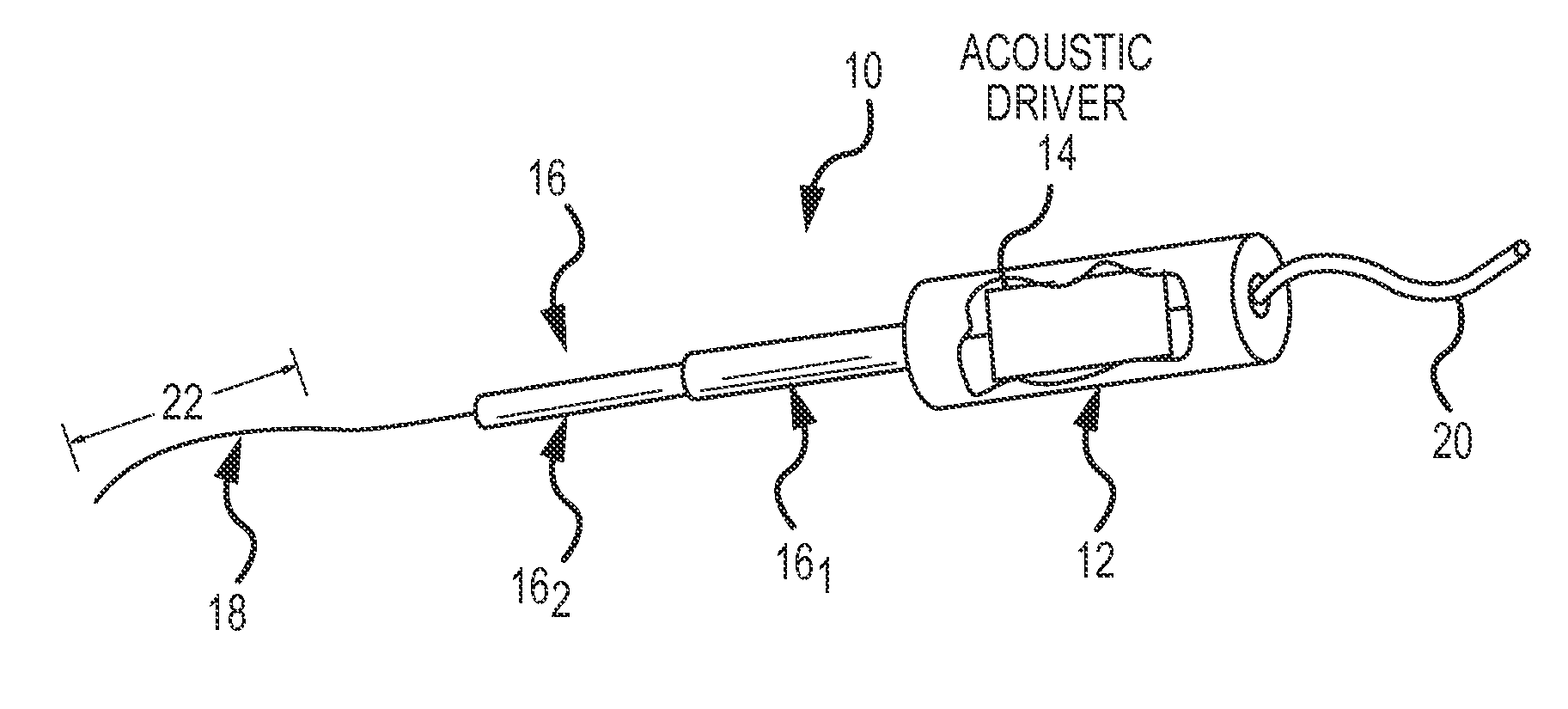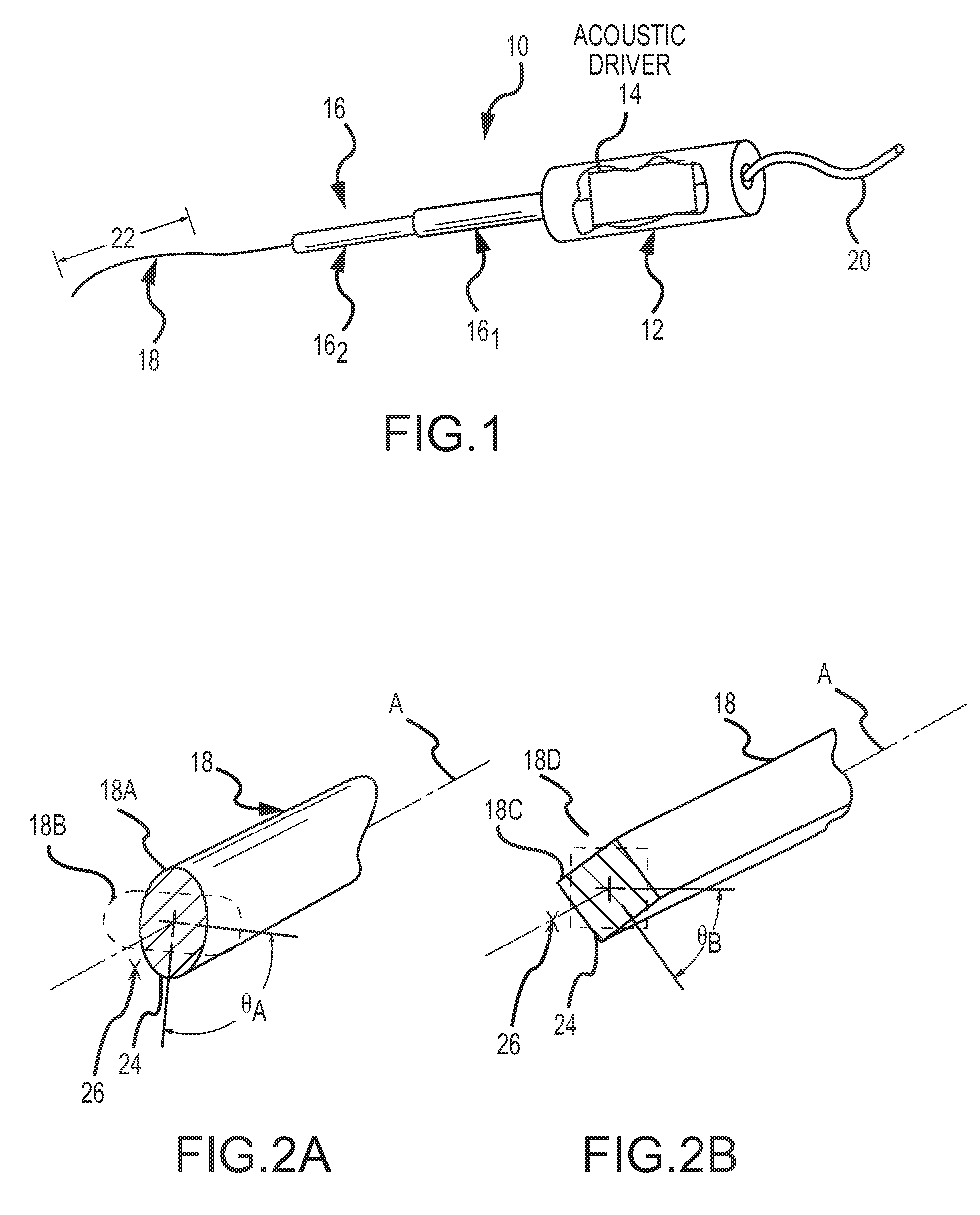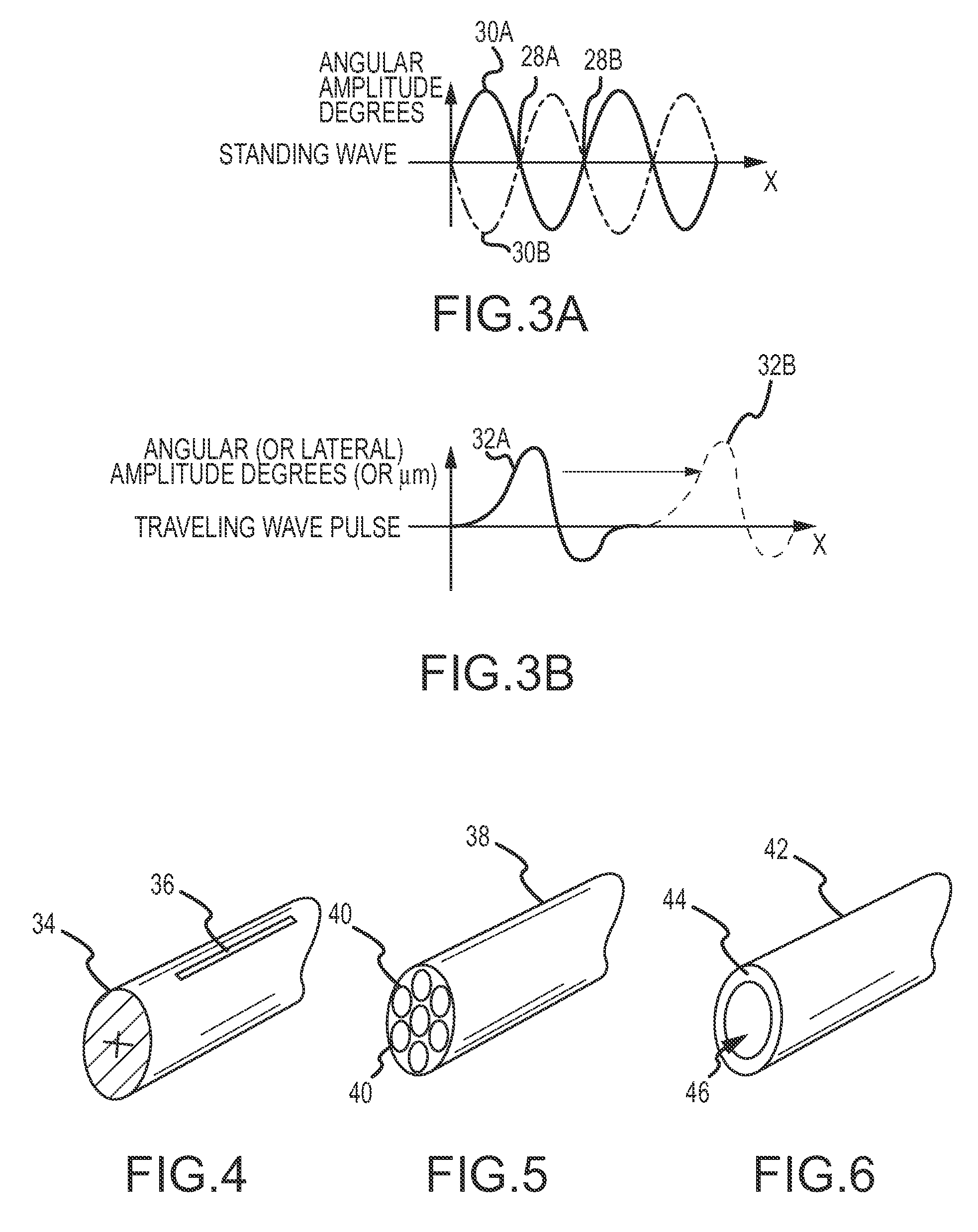Ultrasonic endovascular clearing device
a technology of endovascular clearing and ultrasonic technology, which is applied in the field of ultrasonic endovascular clearing devices, can solve the problems of inability to semi-invasively clear substantial lengths of lumen deposits in a reasonable time, inability to achieve semi-invasive time efficient clearing of substantial lengths of lumen deposits, and inability to achieve any kind of lumen damag
- Summary
- Abstract
- Description
- Claims
- Application Information
AI Technical Summary
Benefits of technology
Problems solved by technology
Method used
Image
Examples
Embodiment Construction
[0023]Referring now to the drawings wherein like reference numerals are used to identify identical components in the various views, FIG. 1 is a simplified, perspective view of an ultrasonic endovascular clearing medical apparatus 10 for use in a bodily lumen. Apparatus 10 is characterized by an acoustically driven flexible clearing member (e.g., the treating wire 18 shown), operating in the ultrasonic frequency range and having a plurality of operating modes, including modes that employ acoustically-driven torsional waves. However, before proceeding to a detailed description of the present invention keyed to the drawings, a general overview of the various modes of operation will be set forth.
[0024]In a first acoustic mode of operation, apparatus 10 is configured to acoustically rotate, in a torsional orientation, a flexible clearing member at an operating frequency and amplitude (e.g., degrees of rotational deflection) selected so as to produce rotational displacement nodes and anti...
PUM
 Login to View More
Login to View More Abstract
Description
Claims
Application Information
 Login to View More
Login to View More - R&D
- Intellectual Property
- Life Sciences
- Materials
- Tech Scout
- Unparalleled Data Quality
- Higher Quality Content
- 60% Fewer Hallucinations
Browse by: Latest US Patents, China's latest patents, Technical Efficacy Thesaurus, Application Domain, Technology Topic, Popular Technical Reports.
© 2025 PatSnap. All rights reserved.Legal|Privacy policy|Modern Slavery Act Transparency Statement|Sitemap|About US| Contact US: help@patsnap.com



